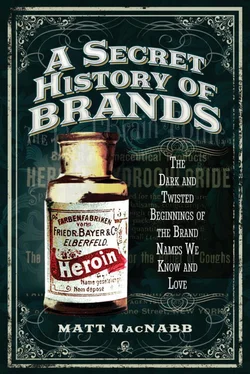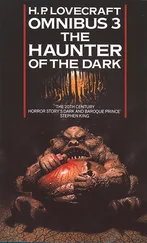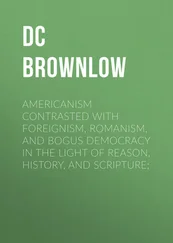The first transcontinental railroad was constructed in America between 1863 and 1869. The final spike, dubbed the golden spike, was driven into the railroad at Promontory Point, Utah, on 10 May 1869, by Central Pacific Railroad Company head Leland Stanford. The railroad united the country for the first time and made transport safer across the wild plains of the Midwest and created the ability to quickly ship products across the vast divide of the United States in a timely manner.
The Birth of the Brand Name
Brand name products weren’t a common sight in the pre-industrialised world, but they did exist. The practice of livestock branding, for example, has been utilised since ancient times. This was more for the practicality of distinguishing your livestock from others rather than any boasting of a particular quality of product. The term brand is derived from the Scandinavian Old Norse language word ‘brandr’, which means ‘burn’. In ancient times the practice was that a creator would burn their symbol or mark into their products, hence the term ‘brand’.
The idea of signing or branding your work if you were an artist or a craftsman dates back as early as the first century. A little known glass blower by the name Ennion was not only the first known glass blower in history, but was also the first known brand. Ennion didn’t just sign his pieces, he would put an entire message on the bottom. His work would read ‘Ennion epoiese’, which was Greek for ‘Ennion made me’. The idea of a lasting brand would later begin to emerge. The Belgian beer company Stella Artois, for example, has been using a similar logo and their brand name since their inception in 1366. There are a handful of brands that emerged over the centuries, but few that still exist today. The majority of brands that we know today were founded in the nineteenth or twentieth centuries.
When the concept of the mass-manufactured brands emerged during the Industrial Revolution, companies were finally able to transport their products long distances and engage in new markets. The major challenge that came with this development was for people to trust and try-out a non-local product. Prior to this time, most products were locally produced and the consumers often knew the people that made it. The concept of trusting in your local area and the pride that can come with even the smallest village or town is still prevalent today.
The marketplace also changed with the birth of the mail order catalogue. There were times throughout history that catalogues were used, primarily by book publishers to notify buyers of their various titles, but the catalogue industry really boomed in the nineteenth century. The first mail-order catalogue in the United States was sent out by Tiffany in 1845. Montgomery Ward soon followed suit in 1872, and Sears in 1888. The ability to handpick products from watches, clothing and sporting goods to automobiles and even homes became an intoxicating mainstay in American culture. The ability to ship products around the nation made it easy for regional companies to expand. The stores would often become the brand, like in the case of the Sears home. Sears, Roebuck and Company sold upwards of 70,000 of their mail order catalogue homes between 1908 and 1940.
It began with the catalogue, but the expansion of the brand name continued to grow, as the regional product began to dissolve and the national and even international product marketplace emerged. The marketplace was flooded with various products that often made outrageous claims, some that were founded and many that weren’t. If your product was reputable it became necessary to distinguish yourself from the herd. A company making a good quality product needed to earn the trust of the regional consumer and they began to build that trust through brand names and advertising. The comfort of knowing that, as a consumer, every time you pick up a Coca-Cola you get the exact same quality of product is what the major corporations of today were built upon. These corporations are often seen now as cold, faceless and inhuman entities, but many of them began as individuals struggling to carve out a place for their product in the competitive marketplace.
In today’s world all major corporations have mission statements and ‘corporate culture’ that help to ensure a certain level of behaviour within the company for all interactions internal and external. There are checks and balances that should ideally keep scandal and disgrace at a minimum and far away from the cherished brand names that are the cornerstone of their business. Historically however, there were no guidelines to keep Bayer away from getting into bed with the Nazis, or to keep Henry Ford from publishing and distributing radical anti-Semitic materials. Corporations like to disavow these dark pasts today, but the study of history demands examination and understanding of truth, even when it becomes inconvenient. This book is intended to enlighten and educate about often hidden parts of brand histories that are often overlooked, and is in no way intended to reflect upon or undermine the far more stable culture that many of these companies and their employees have created today.
In these pages you will read about some disturbing, bizarre and even despicable actions by some of those responsible for the major brand names we know and love today. I want to point out that this in no way reflects on the current companies and corporations that produce these products. These companies were often founded generations ago and those responsible for them are no longer with us. Those that run these companies today are charitable, professional and certainly not associated with any of these controversial beginnings.
Chapter One
Coca-Cola: The Drug-Addled Drink
To many, Coca-Cola is a delicious drink, as American as apple pie. The true origins of this popular soda pop, however, can be a bit murky. Coke is the number one best-selling soft drink in the world and it has a modern day image that projects unity and love to all the world’s citizens. It’s certainly an interesting thought that without the divisive American Civil War, the world wouldn’t have Coca-Cola today, and that its creator wasn’t fighting for Abraham Lincoln and the victorious North, but rather for the Confederate South, the side of the conflict that was advocating for the continuation of slavery.
There is a long-standing urban legend that insists Coca-Cola earned its name from the cocaine content in the original soft drink. Coca-Cola publicly disavows any suggestion that their drink ever contained cocaine. In fact, the history that they tell on their official website glazes right over that part of their past without so much as a mention of the controversial topic. The question then begs, did Coca-Cola actually contain cocaine, or is this just a persistent fallacy? What does American alcohol prohibition have to do with the origins of Coca-Cola? Let’s explore the long and peculiar history of an American icon.
The Life of John Stith Pemberton
Coca-Cola was created by a man named John Pemberton. John Stith Pemberton was born on 8 July 1831 in Knoxville, Georgia. John and his parents, James and Martha, lived in the city of Rome, Georgia, for the majority of his young life. There is little known about his childhood, but we do know that Pemberton was ambitious as a young man and had a distinct knack towards pharmacology. Pemberton studied medicine, with a focus on pharmacology, at the Reform Medical College of Georgia in Macon. There he became licenced as a ‘steam doctor’ in the alternative medicine system known as ‘Thomsonian medicine’ at the age of nineteen. Samuel Thomson invented the Thomsonian system after his wife nearly died when she underwent treatment with conventional medicine. This experience led him to be wary of proper doctors and caused him to use his knowledge of botany to develop a system of herbal remedies that he believed to be superior to the ‘poison’ that was then modern medicine. A steam doctor relied heavily on herbal treatments and the heat from steam baths to cure patients.
Читать дальше












